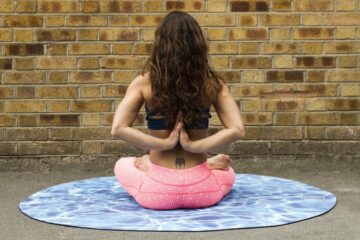In the realm of yoga, the practice goes far beyond physical exercise; it becomes a journey of self-discovery, healing, and transformation. Therapeutic Vinyasa Flows offer a unique approach to yoga that combines the fluidity of Vinyasa with the healing principles of therapeutic yoga.
These gentle yet potent flows are designed to support physical, emotional, and mental well-being, offering practitioners a pathway to holistic healing from within.
In this article, we’ll explore the transformative power of therapeutic Vinyasa flows and how they can be used to cultivate resilience, balance, and wholeness.
Understanding Therapeutic Vinyasa
Therapeutic Vinyasa blends the dynamic sequences of Vinyasa Flow with the principles of therapeutic yoga, creating a practice that is both empowering and nurturing.
These flows are specifically designed to address common physical ailments, such as back pain, tight hips, and shoulder tension, while also supporting emotional and mental well-being.
By combining mindful movement with breath awareness and self-care practices, therapeutic Vinyasa flows offer a holistic approach to healing and self-discovery.
Honoring the Body’s Wisdom
At the heart of therapeutic Vinyasa flows is a deep respect for the body’s innate wisdom and capacity for healing. Instead of pushing through pain or discomfort, practitioners are encouraged to listen to their bodies with compassion and curiosity.
By honoring their limitations and working with, rather than against, their bodies, practitioners create a safe and supportive environment for healing to unfold.
Mindful Movement and Breath Connection
In therapeutic Vinyasa flows, each movement is guided by the breath, creating a seamless integration of body, breath, and mind.
Practitioners are encouraged to move with mindful awareness, paying attention to the sensations in their bodies and the quality of their breath.
By syncing breath with movement, they cultivate a sense of presence and inner peace, allowing healing to occur on a deep and profound level.
Targeted Sequences for Healing
Therapeutic Vinyasa flows often include targeted sequences that address specific areas of tension or imbalance in the body. These sequences may focus on releasing tight muscles, improving joint mobility, or promoting relaxation and stress relief.
By working systematically through the body, practitioners can address both physical discomfort and energetic blockages, restoring balance and vitality from within.
Cultivating Emotional Resilience
Beyond the physical benefits, therapeutic Vinyasa flows support emotional healing and resilience. The mindful movement and breath connection help practitioners connect with their innermost feelings and emotions, allowing them to process and release pent-up tension and stress.
Through the practice of self-compassion and self-care, practitioners develop greater emotional awareness and resilience, empowering them to navigate life’s challenges with grace and equanimity.
Creating a Sacred Space for Self-Discovery
Therapeutic Vinyasa flows provide a sacred space for self-discovery, introspection, and inner exploration. As practitioners move through the sequences with mindful awareness, they may uncover layers of tension, resistance, or emotional holding within themselves.
Through gentle inquiry and compassionate presence, they can begin to unravel these layers, revealing the innate wisdom and healing potential that resides within.
Conclusion
Therapeutic Vinyasa flows offer a powerful pathway to healing and self-discovery, inviting practitioners to cultivate resilience, balance, and wholeness from within.
By combining the dynamic movement of Vinyasa with the nurturing principles of therapeutic yoga, these flows provide a holistic approach to wellness that addresses the needs of the body, mind, and spirit.
So, roll out your mat, breathe deeply, and allow the transformative power of therapeutic Vinyasa flows to guide you on a journey of healing and self-discovery.



